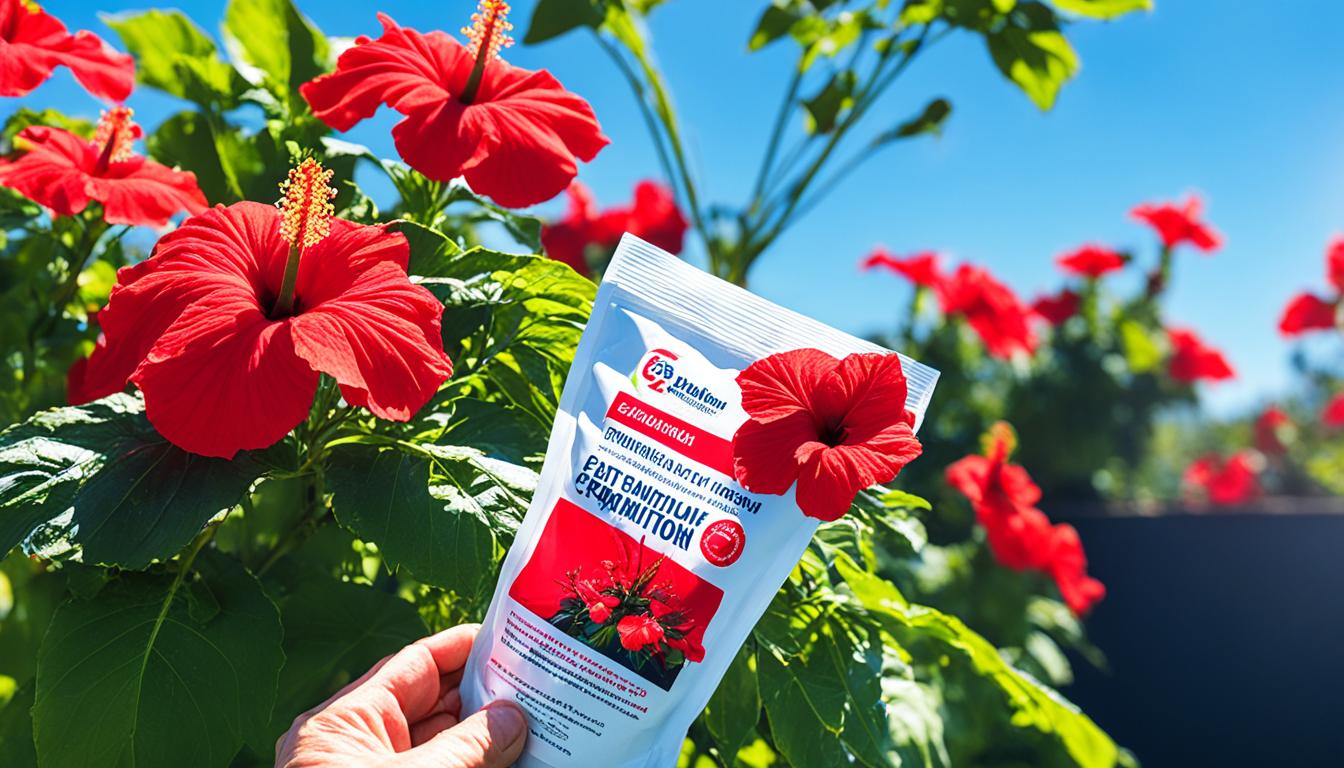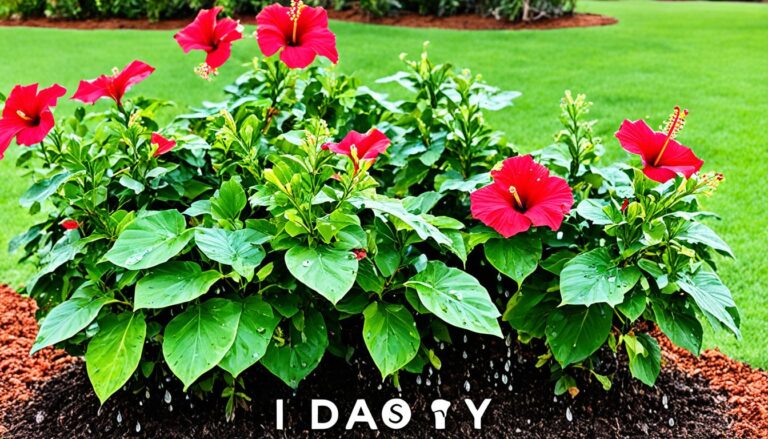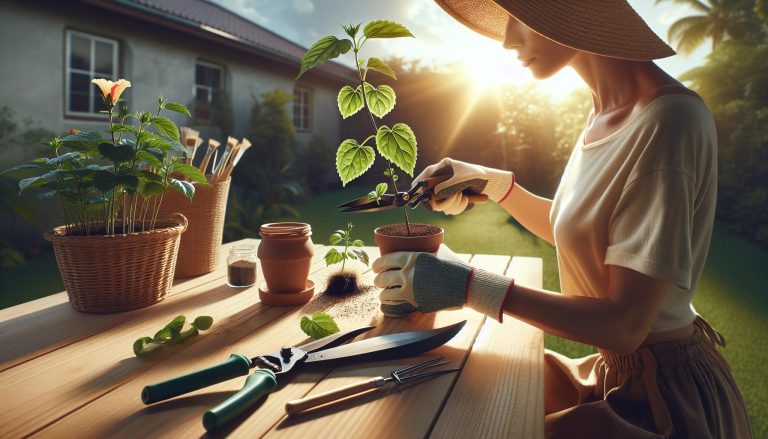Optimal Timing to Fertilize Hibiscus in Florida
When it comes to growing beautiful hibiscus plants in Florida, timing is everything. To ensure your hibiscus thrives and produces vibrant blooms, it’s crucial to know the best time to fertilize. Let me share a story to set the stage for our main content.
Meet Sarah, a passionate gardener from Miami, Florida. Sarah had a beautiful hibiscus plant in her backyard that she adored. She took great care of it, ensuring it received the right amount of sunlight and water. However, her hibiscus just wasn’t producing as many flowers as she hoped.
One day, while chatting with her neighbor, Maria, about her hibiscus woes, Maria shared a valuable tip. She explained that timing is key to promoting optimal growth and blooming. Sarah eagerly listened as Maria shared her secret to vibrant hibiscus plants.
“In Florida, the best time to fertilize hibiscus is in the spring when the plants begin to actively grow,” Maria said. “Fertilize every two weeks using a liquid fertilizer or every eight weeks with a slow-release fertilizer,” she added.
As Sarah followed Maria’s advice, she noticed a remarkable change in her hibiscus plant. The once lackluster plant transformed into a breathtaking showcase of colorful blooms. Sarah was thrilled with the results, and her neighbors couldn’t help but envy her thriving hibiscus.
Key Takeaways:
- Timing is crucial when fertilizing hibiscus in Florida.
- Start fertilizing in the spring when the plants are actively growing.
- Use a liquid fertilizer every two weeks or a slow-release fertilizer every eight weeks.
- Following the proper fertilization schedule can promote vibrant growth and abundant blooms.
- Listen to the advice of experienced gardeners like Maria to achieve stunning hibiscus plants.
Soil Requirements for Hibiscus in Florida
Hibiscus plants in Florida thrive in well-drained soil with a pH between 5.8 and 6.5. To create an ideal environment for your hibiscus, it is recommended to use a potting mix specifically suited for hibiscus flowers. This will provide the necessary nutrients and ensure proper drainage, preventing waterlogging and root rot.
At the time of planting, you can enhance the soil quality by adding compost. Compost enriches the soil with organic matter, improving its structure and nutrient content. By combining compost with the potting mix, you can create a well-balanced soil that will support healthy growth and vibrant blooms for your hibiscus plants.
Although hibiscus plants are adaptable to various soil types, they require consistent moisture and good drainage. This allows the roots to access water while ensuring excess water can move away. Be mindful of the moisture levels in the soil and adjust watering accordingly to maintain an optimal balance.
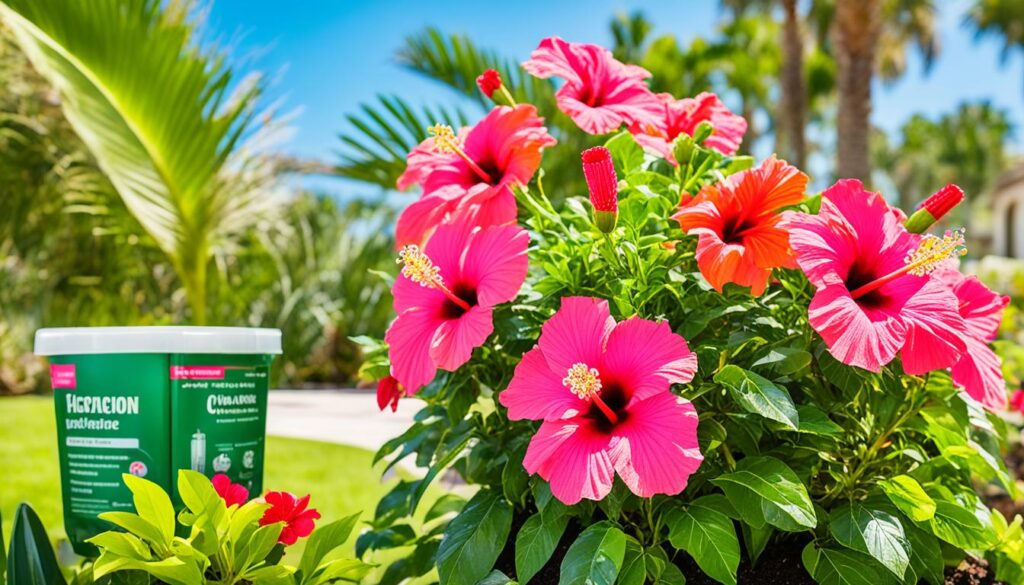
Fertilizer Recommendations for Hibiscus in Florida
Proper fertilization is crucial for the optimal growth and blooming of hibiscus plants in Florida. Regular feeding times and using the right fertilizer can provide the essential nutrients your hibiscus needs to thrive. Here are some fertilizing tips for hibiscus plants in Florida:
- Spring: Start fertilizing your hibiscus plants in early spring, when the plants begin actively growing. This is the time when they have an increased demand for nutrients to support new growth.
- Summer: Continue fertilizing throughout the summer months to sustain healthy foliage and flower production. The increased sunlight and warmth during this season require additional nutrients for the hibiscus plants.
- Fall: Maintain regular feeding during the fall to support the hibiscus plants as they prepare for the upcoming winter months. This will help them build nutrient reserves for the dormant period.
- Winter: Reduce or stop fertilizing during the winter when the hibiscus plants are in their dormant phase. They require less nutrition during this time and should focus on conserving energy.
When selecting a fertilizer, choose one specifically formulated for hibiscus plants. Look for a high-potassium fertilizer with medium amounts of nitrogen and low phosphorus content, as hibiscus plants do not tolerate high levels of phosphorus well. Follow the manufacturer’s instructions for application rates and frequency to ensure the proper balance of nutrients for your hibiscus plants.
| Fertilization Tips for Hibiscus Plants in Florida | Recommended Feeding Times for Hibiscus in Florida |
|---|---|
| Start fertilizing in early spring | Spring |
| Continue fertilizing throughout summer | Summer |
| Maintain regular feeding in the fall | Fall |
| Reduce or stop fertilizing in winter | Winter |
Sunlight and Shade Requirements for Hibiscus in Florida
Hibiscus plants in Florida thrive in full sunlight, hibiscus maintenance guidelines in Florida, providing them with the energy they need to grow and produce vibrant blooms. However, they may require some shade during the hottest parts of the day to prevent excessive heat stress and sunburn.
When choosing a location to plant your hibiscus, opt for an area that receives at least six hours of direct sunlight daily. This ensures that the plants receive enough light to fuel their photosynthesis and promote healthy growth. Optimal fertilization timing for hibiscus in Florida is crucial for their overall well-being and blooming capacity.
It is also important to consider the growth habit of hibiscus plants. They tend to perform better when planted in the ground rather than in containers. Hibiscus maintenance guidelines in Florida suggest placing them in well-prepared flower beds, where they can stand out and create a stunning focal point in your garden.
| Season | Planting Time | Planting Depth |
|---|---|---|
| Spring | March – May | Deep planting with stems level with the soil surface |
| Summer | June – August | Deep planting with stems level with the soil surface |
| Fall | September – November | Deep planting with stems level with the soil surface |
By following these guidelines and ensuring that your hibiscus receives adequate sunlight and occasional shade, you can create a favorable environment for them to thrive and produce stunning blooms. Remember to adjust your fertilization schedule according to the recommended optimal fertilization timing for hibiscus in Florida, providing them with the essential nutrients they need to reach their full potential.
Watering Recommendations for Hibiscus in Florida
Hibiscus plants in Florida require regular watering to keep the soil moist and ensure healthy growth. Proper watering is especially crucial during the early stages of planting, as it helps the plants establish their roots and adapt to their new environment.
When you first plant your hibiscus, it’s important to provide thorough watering every couple of days. This helps the roots settle in and promotes efficient nutrient absorption. As the plant becomes more established, you can adjust the watering schedule.
For the first year after planting, it is recommended to water your hibiscus twice a week. This ensures that the soil remains consistently moist without becoming waterlogged. It’s important to monitor the moisture level of the soil and make adjustments as necessary to avoid overwatering or allowing the roots to dry out.
Once your hibiscus reaches its second year and beyond, you can reduce the frequency of watering to once per week. By this time, the plant’s root system will be well-established, and it will require less moisture to thrive. However, it’s still important to regularly check the soil moisture to ensure it stays adequately hydrated.
Remember that Florida’s climate can vary, so it’s essential to adapt your watering routine based on weather conditions and the specific needs of your hibiscus plants. During periods of high heat or drought, you may need to increase the frequency of watering to prevent dehydration.
It’s always better to water deeply and infrequently rather than giving your hibiscus light, frequent sprinklings. Deep watering encourages the development of deep roots, which helps the plants withstand dry spells and promotes overall plant health.
Signs of Overwatering and Underwatering
Proper watering is vital for the health of your hibiscus plants. Here are a few signs to watch out for that may indicate whether you are overwatering or underwatering:
- Overwatering: Leaves turning yellow, wilting, or dropping prematurely. Soil that is constantly damp or waterlogged.
- Underwatering: Leaves curling or wilting, dry or powdery soil, slow growth, or reduced flowering.
By paying attention to these signs and adjusting your watering routine accordingly, you can ensure that your hibiscus plants receive the optimal amount of moisture for healthy growth and abundant blooming.
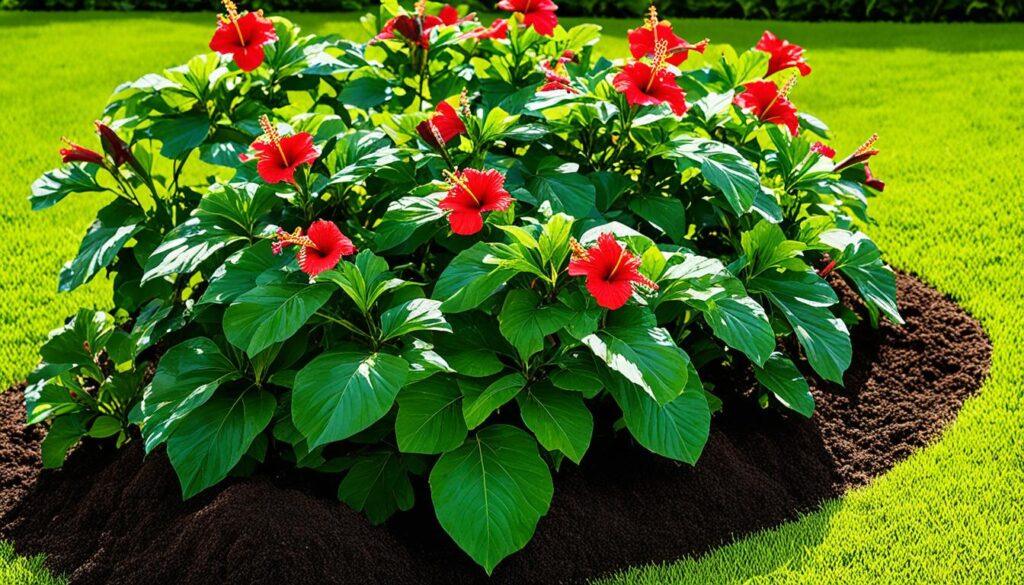
| Watering Recommendations for Hibiscus in Florida | |
|---|---|
| Initial Stage (First Few Weeks) | Thorough watering every couple of days |
| First Year After Planting | Water twice a week |
| Second Year and Beyond | Water once per week |
Growing Hibiscus in Containers in Florida
When it comes to growing hibiscus in containers in Florida, the process is quite similar to growing them in the ground. However, there are a few key considerations to keep in mind to ensure the success of your container-grown hibiscus plants.
Choosing the Right Container
Hibiscus plants prefer to be slightly rootbound in containers, so it’s best to use a smaller-sized pot with good drainage. This allows the roots to grow and establish themselves, resulting in healthier plants. A pot with drainage holes at the bottom is essential to prevent waterlogging, which can lead to root rot.
Acidic Soil and Regular Care
To create an ideal environment for your container-grown hibiscus, it’s important to use acidic soil. Aim for a pH level between 5.8 and 6.5, as hibiscus plants thrive in slightly acidic conditions. You can achieve this by using a potting mix specifically formulated for acid-loving plants or amend the soil with materials like peat moss or pine needles.
Regular watering and fertilizing are crucial for the health and growth of hibiscus plants in containers. Keep the soil evenly moist, but avoid overwatering, as it can lead to root rot. Fertilize your hibiscus plants every two weeks during the growing season with a liquid fertilizer or every eight weeks with a slow-release fertilizer. This ensures that they receive the essential nutrients they need to bloom beautifully.
Providing Adequate Sunlight and Winter Care
Hibiscus plants require plenty of sunlight to thrive, even when grown in containers. Place your containers in an area that receives at least six hours of direct sunlight daily, such as a sunny patio, balcony, or deck.
During the colder months, it’s important to protect your container-grown hibiscus from frost and freezing temperatures. If necessary, bring them indoors to a location where they can still receive sufficient sunlight. Maintaining a consistent temperature above freezing will help prevent damage to the plants.
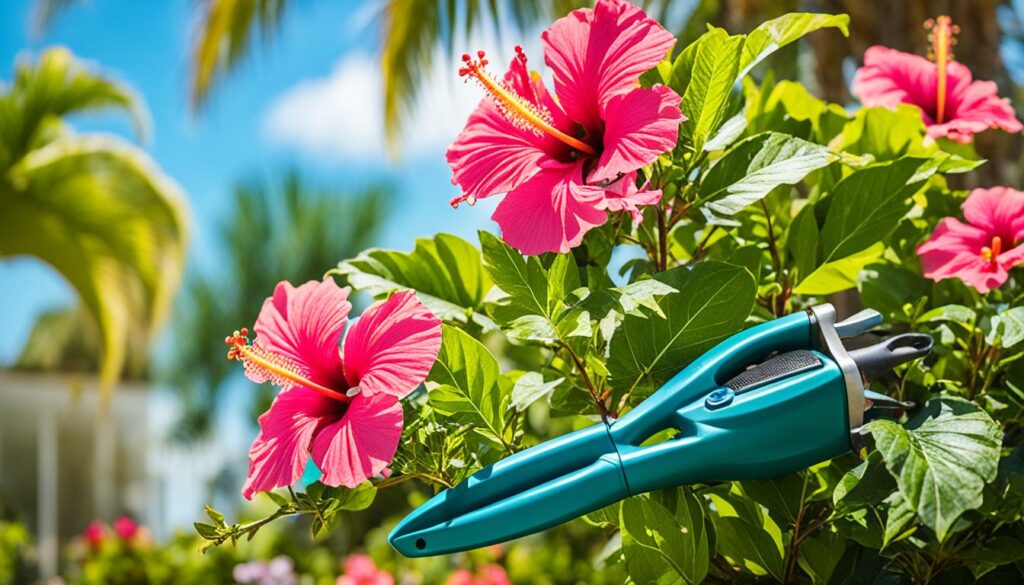
Recommended Care for Container-Grown Hibiscus
| Care Aspect | Recommendation |
|---|---|
| Container Size | Use a smaller pot with good drainage to allow for slight root binding. |
| Soil | Use acidic soil with a pH level between 5.8 and 6.5, or amend with peat moss or pine needles. |
| Watering | Keep the soil evenly moist, but avoid overwatering to prevent root rot. |
| Fertilizing | Fertilize every two weeks with liquid fertilizer or every eight weeks with slow-release fertilizer during the growing season. |
| Sunlight | Place containers in a sunny location that receives at least six hours of direct sunlight daily. |
| Winter Care | Protect hibiscus from frost and freezing temperatures, and consider bringing them indoors if necessary. |
By following these hibiscus care tips for Florida residents, you can enjoy the beauty of hibiscus plants even if you have limited space. Container-grown hibiscus brings a touch of tropical paradise to your patio or balcony, providing stunning blooms year after year.
Growing Hibiscus Indoors in Florida
Hibiscus plants can also be grown indoors in Florida. While they thrive in the Sunshine State’s outdoor climate, providing the right conditions indoors can allow you to enjoy their vibrant blooms year-round. In this section, we will explore the care tips for successfully growing hibiscus plants indoors.
1. Sunlight and Humidity
Hibiscus plants require lots of sunlight, even when grown indoors. Place them in a well-lit area near a south-facing window to provide them with the necessary sunlight. Supplemental artificial lighting can be used if natural light is limited. Additionally, hibiscus plants prefer high humidity levels, so placing a humidifier nearby or misting the leaves regularly can help mimic their natural environment.
2. Watering
Proper watering is crucial for indoor hibiscus plants. Water them thoroughly whenever the top inch of soil feels dry to the touch. During the flowering period, reduce the amount of water you give to the plants. However, when growth speeds up, increase watering to ensure the soil remains consistently moist.
3. Fertilization
To encourage healthy growth and abundant blooms, fertilize your indoor hibiscus plants every two weeks during the growing season. Use a balanced liquid fertilizer formulated specifically for hibiscus plants. Follow the instructions on the packaging to determine the appropriate amount to apply.
4. Winter Care
Florida’s mild climate allows hibiscus plants to thrive outdoors year-round. However, if you choose to bring your indoor hibiscus plants outdoors during the summer, be sure to acclimate them gradually to prevent sunburn. Additionally, during the winter months, when temperatures drop, it’s advisable to bring your hibiscus plants indoors to protect them from the cold.
By following these care tips, you can enjoy the beauty of hibiscus plants indoors in Florida and add a tropical touch to your home.
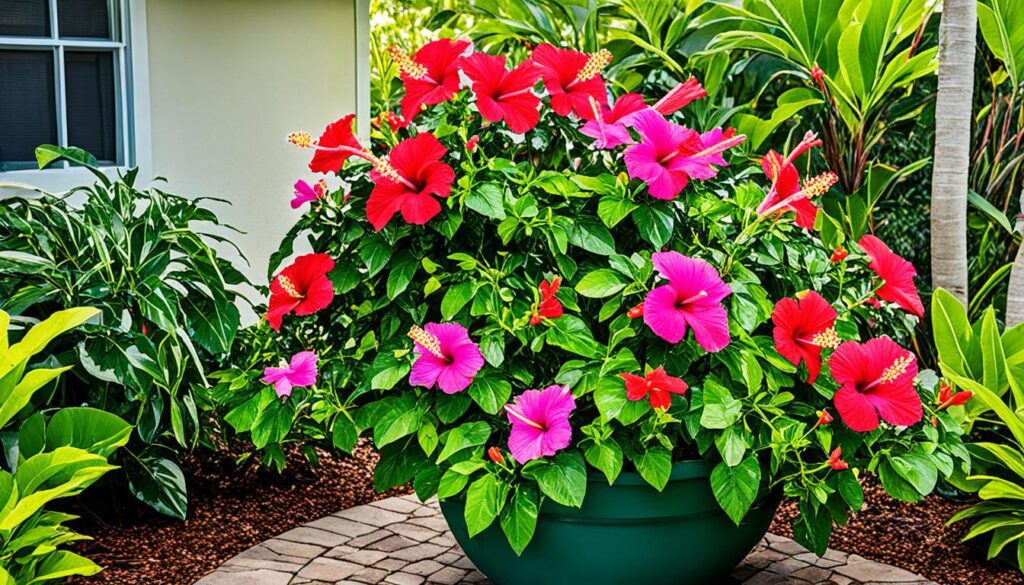
| Care Tips for Growing Hibiscus Indoors | |
|---|---|
| Sunlight | Place hibiscus plants near a south-facing window or provide supplemental artificial lighting. |
| Humidity | Maintain high humidity levels by using a humidifier or misting the leaves regularly. |
| Watering | Water thoroughly when the top inch of soil feels dry to the touch. |
| Fertilization | Use a balanced liquid fertilizer formulated for hibiscus plants every two weeks during the growing season. |
| Winter Care | Bring indoor hibiscus plants indoors during the winter to protect them from low temperatures. |
Hibiscus Varieties in Florida
Florida is a great place to grow hibiscus due to its warm climate and abundant sunshine. There are several hibiscus varieties that are well-suited for Florida’s unique conditions, adding a vibrant touch to any garden or landscape.
One popular variety that thrives in Florida is the marsh hibiscus. This variety is known for its tall growth and striking red flowers, which create a stunning visual impact in any outdoor space.
In addition to the marsh hibiscus, there are also native species of hibiscus that can be found in Florida. These native species offer a wide range of colors and sizes, allowing gardeners to choose the perfect hibiscus variety for their preferences.
Whether you’re looking to create a colorful hedge, add a tropical touch to your landscape, or brighten up your patio with container plants, hibiscus varieties are versatile and can be used in various ways. Their bold and beautiful blooms are sure to attract attention and create an inviting atmosphere.
Comparison of Hibiscus Varieties in Florida
| Variety | Color | Size | Best Use |
|---|---|---|---|
| Marsh Hibiscus | Red | Tall | Landscape plants, focal points |
| Native Hibiscus | Various | Varies | Landscape plants, hedges, containers |
As shown in the table above, the marsh hibiscus is known for its vibrant red flowers and tall growth, making it a perfect choice for creating focal points in landscape designs. Native hibiscus varieties, on the other hand, offer a wide range of colors and sizes, providing versatility for different gardening needs.
No matter which hibiscus variety you choose, proper care and maintenance are essential to keep them thriving and blooming. Be sure to follow the hibiscus care tips for Florida residents, including providing the right amount of sunlight, well-drained soil, regular watering, and appropriate fertilization. With a little love and attention, your hibiscus plants will reward you with their stunning blooms and add a touch of tropical beauty to your Florida garden.
Feeding Your Hibiscus in Florida
Hibiscus plants in Florida require regular feeding to support their growth and blooming. Just like humans, plants need the right nutrients to thrive, and hibiscus is no exception. When it comes to hibiscus care tips for Florida residents, providing the right nutrients is crucial for maintaining the health and beauty of your hibiscus plants.
One key nutrient that hibiscus plants in Florida crave is potassium. Potassium is essential for plant growth, flower development, and overall plant health. It helps regulate essential plant functions and enables your hibiscus to reach its full blooming potential.
When choosing a fertilizer for your hibiscus plants, opt for a high-potassium fertilizer specifically designed for hibiscus. This specialized fertilizer will provide your plants with the optimal amount of potassium they need to flourish. It’s important to note that hibiscus plants in Florida do not tolerate high levels of phosphorus well, so look for a fertilizer with minimal phosphorus content.
In addition to potassium, hibiscus plants also benefit from medium amounts of nitrogen. Nitrogen promotes healthy foliage growth and ensures that the plant has the necessary energy to produce those stunning blooms. Including a balanced amount of nitrogen in your fertilizer will help maintain the overall health and vigor of your hibiscus plants.
To summarize, when feeding your hibiscus in Florida, prioritize a high-potassium fertilizer with medium amounts of nitrogen and minimal phosphorus. This will provide your plants with the essential nutrients they crave, supporting their growth, blooming, and overall well-being.
Feeding Your Hibiscus: Key Tips
- Choose a fertilizer specifically designed for hibiscus, with a high-potassium and low-phosphorus content.
- Ensure that the fertilizer also contains medium amounts of nitrogen for healthy foliage growth.
- Follow the instructions on the fertilizer packaging for application rates and frequency.
- Apply the fertilizer evenly around the base of the plant, keeping it away from the stems and leaves.
- Water the plants after fertilizing to ensure that the nutrients are absorbed into the soil.
- Regularly monitor the condition of your hibiscus plants and adjust the fertilization schedule as needed.
By providing your hibiscus plants with the right nutrients through proper feeding, you can enjoy their vibrant blooms and lush foliage throughout the year. Remember to always prioritize their specific potassium needs, and choose a fertilizer that caters to the unique requirements of hibiscus in the Florida climate.
Supplementing Nutrients for Hibiscus in Florida
In addition to regular fertilization, hibiscus plants in Florida may benefit from supplemental nutrients. One effective way to provide extra support during the flowering season is by supplementing potassium with a hibiscus booster. Hibiscus care tips for Florida residents suggest that this can help promote healthier blooms and overall plant vitality.
When choosing a booster, make sure it contains the necessary minor elements such as copper, magnesium, and iron. These micronutrients play a crucial role in the plant’s metabolic processes and contribute to its overall health and appearance. By using a fertilizer that meets these requirements, you can ensure your hibiscus plants receive the full spectrum of nutrients they need for optimal growth.
When applying supplemental nutrients, it’s important to follow the directions on the fertilizer packaging. Each product may have specific instructions regarding the application rate and frequency. Adjusting the dosage based on your hibiscus plant’s needs is crucial for preventing nutrient deficiencies or excesses, which can negatively impact growth and flowering.
Supplementing Nutrients: Tips and Best Practices
Here are some additional tips and best practices for supplementing nutrients for your hibiscus plants in Florida:
- Monitor your hibiscus plants closely for any signs of nutrient deficiencies, such as yellowing leaves, stunted growth, or poor flowering. These indicators can help you identify which nutrients may need supplementation.
- Apply supplemental nutrients in the morning or evening when the weather is cooler and the plants are less stressed. Avoid applying nutrients during the hottest part of the day to prevent potential leaf burn.
- Consider using organic fertilizers or nutrient-rich compost to provide a natural source of supplemental nutrients. Organic options can help improve soil health and enhance long-term plant vitality.
- Regularly test your soil to monitor nutrient levels and pH. This will help you determine if there are any deficiencies or imbalances that require additional supplementation.
- Keep a record of the nutrient supplementation schedule to ensure consistency and avoid over- or under-applying nutrients. This will help you establish a reliable feeding routine for your hibiscus plants.
By supplementing nutrients in addition to regular fertilization, you can provide your hibiscus plants in Florida with the essential elements they need for vibrant growth and abundant flowering. Remember to observe your plants’ response to the supplemental nutrients and make necessary adjustments to achieve optimal results.
Caring for Hibiscus in Florida
Proper care is essential for the health and vitality of your hibiscus plants in Florida. By providing the right conditions, you can ensure that your plants thrive and produce beautiful blooms. Here are some hibiscus care tips for Florida residents:
1. Sunlight:
Hibiscus plants require plenty of sunlight to grow and bloom. Place your plants in a location that receives at least six hours of direct sunlight daily. However, during the hottest parts of the day, some shade may be beneficial to prevent the plants from overheating.
2. Well-Drained Soil:
Make sure to plant your hibiscus in well-drained soil with a pH between 5.8 and 6.5. Using a generic potting mix suitable for hibiscus flowers and adding compost at the time of planting can help create a balanced soil environment.
3. Regular Watering:
Keep the soil around your hibiscus plants consistently moist, especially during the early stages of planting. Thoroughly water the plants every couple of days for the first few weeks, and then adjust to twice weekly watering for the first year, and once per week for the second year and beyond. Avoid overwatering, as it can lead to root rot.
4. Appropriate Fertilization:
Feed your hibiscus plants regularly with a high-potassium fertilizer designed for hibiscus. This essential nutrient supports plant growth, flower development, and overall health. Follow the recommended feeding schedule and avoid excessive phosphorus, as hibiscus plants are sensitive to high phosphorus levels.
5. Monitor Soil Moisture:
Regularly check the moisture level of the soil to ensure it’s neither too dry nor waterlogged. Dry soil indicates the need for watering, while waterlogged soil requires improved drainage. Maintaining the right moisture level promotes healthy root development and overall plant growth.
6. Protect from Extreme Temperatures:
Shield your hibiscus plants from extreme heat and cold. Protect them from freezing temperatures during winter by bringing them indoors or covering them with frost cloth. Similarly, provide shade or move the plants to a sheltered area during scorching hot days to prevent stress and damage.
7. Pruning:
Regular pruning helps maintain the shape of your hibiscus plants and encourages healthy growth. Remove any dead, diseased, or overgrown branches and stems. This helps prevent the spread of pests and diseases while allowing the plants to focus their energy on new growth and vibrant blooms.
Follow these hibiscus care tips for Florida residents, and you’ll enjoy vibrant and healthy hibiscus plants that bring beauty and tropical charm to your garden.
Conclusion
Growing and caring for hibiscus in Florida can be a rewarding and enjoyable experience. By following the recommended guidelines for soil, sunlight, watering, and fertilization, you can ensure that your hibiscus plants thrive and produce beautiful blooms. Whether planted in the ground or in containers, hibiscus adds a touch of tropical beauty to any garden or indoor space.
With proper care, your hibiscus plants can bloom year-round, attracting hummingbirds and butterflies while creating an exotic and vibrant atmosphere. Remember to fertilize regularly, ensuring your hibiscus receives the necessary nutrients for healthy growth and abundant flowering. Providing adequate sunlight, well-drained soil, and consistent watering will keep your hibiscus plants happy and thriving.
As a Florida resident, you have a unique advantage in caring for hibiscus plants. The warm climate and tropical environment create ideal conditions for these stunning flowers. Take advantage of these hibiscus care tips for Florida residents to create a colorful oasis in your own backyard or indoors. With dedication and a little TLC, your hibiscus plants will reward you with their vibrant blooms, adding a touch of paradise to your surroundings.

